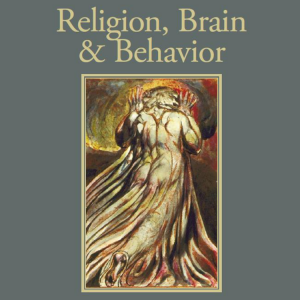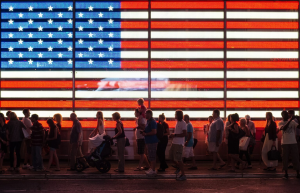Did you know that Muslims typically have higher birthrates than Christians? That switching between religions or between religion and nonreligion can cause dramatic long-term changes to population sizes? That immigration is significantly changing the religious makeup of most countries on earth? That many nations critically need forecasts of the number of people or various religions for effective civic planning?
The Modeling Religious Change project (MRC) engages issues such as these, striving for a detailed understanding of religious and nonreligious identity and change so as to support new ways of approaching demographic analysis and forecasting. Let’s dive more deeply into the world of demographics of religion in order to understand the contribution that MRC is making.
The United Nations produces demographic projections based on census data for each country of the world, taking account of fertility, mortality, and migration. But for more fine-grained demographic projections, experts drill down into specific sub-national regions and figure out what’s likely to happen in the future. This informs decisions, such as where to build new schools and close old ones, how many new hospital beds are required to meet demand, and what kinds of social conflicts might need to be managed in the short and long term.
Religion is critical in such calculations because people’s behavior is often guided by their religious beliefs and practices. Everything from likely family size to economic security to migration patterns are strongly correlated with religion. Thus, knowing about people’s religion matters for better civic planning.
But which aspects of religion matter? In Norway, more than 95% of the population identify as Lutheran, which is the state church. However, the number of people who have actual religious beliefs is well under half that, and regular religious service attendance is only around 6%. The census reports extremely high religiosity in Norway but the on-the-ground story, which reveals the details critical for civic planning, is very different.
Secularization is one type of religious switching that has swept through North Atlantic cultures – and now reaching the coasts of the USA – since World War II. In China, people are moving in the opposite direction, switching from no religion to traditional religious options such as Confucianism, Daoism, and Buddhism, or to imported religions such as Christianity and Islam.
Obviously, thinking about religious and nonreligious identity and change is a complicated task.
Meet the team
Rachel Bacon
Saikou Diallo
George Hodulik
LeRon Shults
Nicole Smith
David Voas
Wesley J. Wildman
Gina Zurlow
Approach
MRC extends existing social-science methods for conceptualizing and measuring change in religious and non-religious populations by using computer modeling and simulation (M&S). Generously funded by the John Templeton Foundation, MRC is creating theory-based simulations of religious and non-religious identity and change in the USA, Norway, and India.
MRC begins with a big-theory approach, integrating disciplines relevant to the complexities of social change, including demography, social psychology, cognitive science, and political economy. MRC computational simulations employ causal architectures reflecting a synthesis of the best theories of religious and nonreligious identity and change for the countries we’re studying.
Our project combines traditional demographic methods with simulation approaches to population projection in order to capture the personal, complex, and dynamic nature of religious identity. Traditional demographic projection methods use, at minimum, measures on geographic region, time, sex, and age. We have also identified five dimensions of religiosity to help us take into account different cultures, as well as social and economic change over time. These dimensions are rooted in the cognitive and emotional functions of human beings, allowing us to create a data-grounded, multidisciplinary, cross-cultural theory of religious change that is applicable to the times, places, and cultures included in our study.
Our team is collecting, standardizing, and analyzing data from national censuses, ethnographic studies, and surveys on religious or spiritual identity, beliefs, and practices. The databases we create allow us to observe and measure different forms of religious change (such as secularization, conversion to religion, and switching between religions) while taking account of numerous dimensions of religiosity different cultural settings from as early as 1940 forwards. MRC will build novel datasets that inform our own demographic projections and will provide valuable insights into the demography of religion beyond our project.
A combination of these datasets become the basis for analyzing the result of the country-specific simulations, which project religious change by re-creating the real-world phenomena of religious change in an artificial society. MRC uses cutting-edge agent-based models to incorporate and track individual characteristics, allowing us to measure the impact of complex (societal, environmental, economic) factors of personal (non)religious identity and general religious change. Society, in all its complexity, is simply the combination of many, many individuals who belong to families, neighborhoods, workplaces, and social networks. Complex outcomes emerge from unique combinations of underlying rules. Aggregate rates of religious switching, for instance, arise out of the combined results of a multitude of individual decisions. For each country, the simulation runs millions of times to generate data for each combination of parameter settings.
Impact
MRC is reshaping the future of data-driven, multi-disciplinary demographic research by intentionally combining traditional social science methodologies with cutting-edge computer modeling and simulation.
Measuring religious change and forecasting the future of religious change are incredibly complicated tasks with a high possibility for error. Civic planners rely on demographic projections, regardless of how (in)accurate they might be. We are tackling multiple problems in this field through our advanced data-gathering techniques and agent-based models. Our work will improve the demographics of religion and system engineering and ultimately produce more accurate projections of religious change.
The aspirations of MRC move the project out to the cutting-edge of simulation engineering, the scientific study of religion, and demographics simultaneously.
- MRC will advance simulation engineering by demonstrating how to run large artificial societies with complex agents in massive networks of distributed computing machines, supporting innovative visualization to help users interpret what’s going in the artificial societies and the lives of their agents.
- MRC will push the scientific study of religion in new directions by integrating typically separated theories into conceptually consistent theoretical integrations, defining a standard model of religious cognition and behavior and demonstrating the plausibility of that model by implementing it in the agent minds of our artificial societies.
- MRC will advance the demographics of religion by delivering proof of concept for a new approach to studying religious and nonreligious identity and change, inviting demographic study of religion and nonreligion to expand beyond its traditional methodological boundaries.
The Assumption-Relative Religious Demographics Information System (ARDEMIS) is a web-based system for estimating and visualizing the impact of measurement and ruleset assumptions on religious demographic projections. With ARDEMIS, users will be able to compare projections of population dynamics and estimates of religiosity across different measures and data sources. By toggling model options, users can see how methodological and theory-derived assumptions influence the outcome of population projections. Each change in a parameter or assumption alters the forecast of a religious population. Anyone can explore the parameters visually and see how results change when taking specific theories and methods into consideration. This will help demographers compare their projections with other possible ways of predicting (non)religious change.
Latest updates
Publications
Kiszkiel,L., Paweł Laskowski, P., Voas, D., Bacon, R. J., Wildman, W. J., Puga-Gonzalez, I., Shults, F. L., & Talmont-Kaminski, K. (2024). Dataset of Integrated Measures of Religion (DIM-R). Harmonization of religiosity data from selected international multiwave surveys, Religion, Brain & Behavior. https://doi.org/10.1080/2153599X.2024.2305447
Bacon, R. J., Bjerknes, E. C. S., Skipitaris, P., Sherwood-Walter, M. A., Shults, L. A., & Shults, F. L. (2023). The Norwegian Memory Tasks: Using Pensioner Auto-Biographies to Study Religion in a Secularizing Country. Review of Religious Research, 65(3), 374-392. https://doi.org/10.1177/0034673X231208695
Puga-Gonzalez, I., Bacon, R. J., Voas, D., Shults, F. L., Hodulik, G., & Wildman, W. J. (2022). Adapting Cohort-Component Methods to a Microsimulation: A case study. Social Science Computer Review, 40(4), 1054-1068. https://doi.org/10.1177/08944393221082685
Wildman, W. J., Shults, F. L., Diallo, S. Y., Gore, R., & Lane, J. (2020). Post-Supernatural Cultures: There and Back Again. Secularism and Nonreligion, 9, 6. DOI: http://doi.org/10.5334/snr.121
Cragun, R., McCaffree, K., Puga-Gonzalez, I., Wildman, W. and Shults, F.L., (2021). Religious Exiting and Social Networks: Computer Simulations of Religious/Secular Pluralism. Secularism and Nonreligion, 10(1), p.2. DOI: http://doi.org/10.5334/snr.129
Presentations
Shults, F. LeRon, Konrad Talmont-Kaminski, Rachel Bacon, Gina Zurlo, Wesley Wildman. “Religious Identity and Change: New Datasets, New Tools, New Insights.” American Academy of Religion. San Antonio, TX. November 20, 2023.
Wildman, Wesley J., David Voas, Conrad Hackett, Jörg Stolz, Marcin Stonawski, Jonathan Evans, Rachel Bacon, Lukasz Kiszkiel, Piotr Paweł Laskowski, Konrad Talmont-Kaminski. “Religious Identity and Change: New datasets and new insights.” Society for the Scientific Study of Religion. Salt Lake City, UT. October 21, 2023.
Bacon, Rachel J., George Hodulik, Wesley Wildman. “Assessing the Cost of Population Dynamics Design Options in a Microsimulation.” The European Social Simulation Association’s annual Social Simulation Conference. Milan, Italy. September 12-16, 2022.
Bacon, Rachel J., George Hodulik, David Voas, Ivan Puga-Gonzalez, Wesley Wildman. “Why Your Microsimulation Misses the Mark: Identifying and Solving Sources of Divergence Between Microsimulation and Cohort Component Models of Population Change.” Poster presented at the Population Association of America. Atlanta, GA. April 8, 2022.
Bacon, Rachel J. “Retrospective Measures on Parents’ Attendance and Religiosity in the U.S.: How Far Back Can We Go, and What Does it Tell Us.” Society for the Scientific Study of Religion. Portland, OR. October 22, 2021.





